How Silicon Valley’s hype machine continuously creates solutions nobody is asking for
The most dangerous narratives do not come from tools that market to developers and promise productivity, but come from tools that market to everyone.
It all starts with a demo. A developer speaks a few lines of natural language into a microphone, and a fully functional application appears on screen, code and all. It looks like magic and it feels like the future.
VCs, terrified of missing the next big thing, open their wallets. A valuation of $100 million here, $500 million there, then a billion dollars materializes in a matter of months, often before a single enterprise contract is signed.
Nobody knows what it is, but it’s provocative, it gets people going 😂

But hey, it’s a tale as old as time. Almost everyone, at least my age or higher, will remember the classic Steve Jobs iPhone reveal. At that time (2007), the iPhone demo units were essentially prototypes that were extremely unstable. Engineers worked out specific sequences of actions that wouldn’t crash the device, and Steve Jobs had to follow a carefully choreographed script.
If he did things in the wrong order or spent too much time on certain apps, the phones would crash. They had multiple backup units on stage just in case. And this was not his first time doing a demo without having the actual production ready product.
And while Apple did follow the flashy demo > unfinished product play at the time quite a lot, Apple is still and most likely will be a market leader because they found a way. And because they build with the consumer in mind.
They created the right type of solutions, and moreover, they also highlighted the right type of problems that will be relatable to global markets and ultimately would generate cashflow.
But, not everyone is or will be Apple. Nor Steve Jobs.
In the past few weeks I read so many articles about vibe coding, from both sides of the fence and it’s quite funny to me to see yet again, another case of Pets.com, YO app, NFTs, Web3, Clubhouse lol, and others as such, proudly powered by Silicon Valley. I liked this article a lot from
But things are going in all sorts of wrong directions…
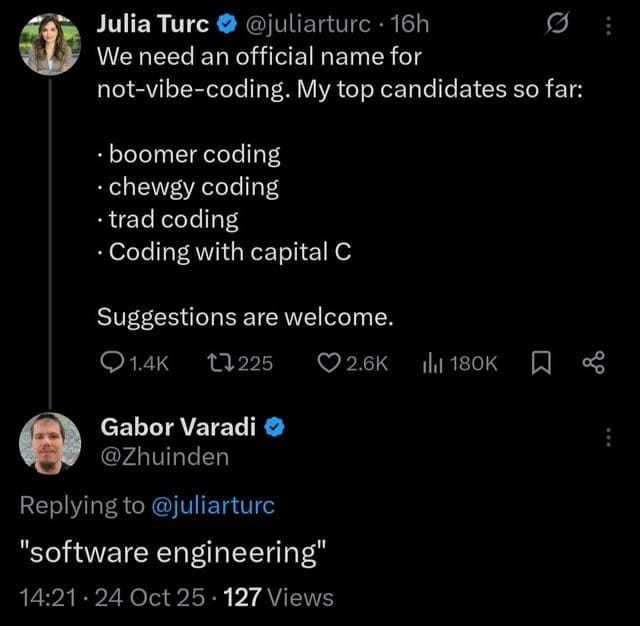
And of course, who would have guessed things would go this way? /s
No one saw it coming… besides the actual software engineers, devs, data engineers.
The most insane and scary thing is seeing established companies from different categories, jumping this wave and redoing their go to market, positioning and messaging to dry hump this narrative of vibe-coding in the hopes someone, anyone will think they are cool and with the times. Innovation.
/s stands for sarcasm, mentioning it for folks that do not live on Reddit like myself.
So, moving on, the story vibe coding/coding assistants, Scooby-Doos and Cocomelon companies are telling today, is the same story that Silicon Valley has told itself, and the world, for decades. And in this edition of Beyond the Mean, I want to do a bit OG throwback and then try to analyze and make sense of what is REALLY going on.
BTW, when I was recording this week a podcast with the nice folks at Measure Pod, we ended up talking about all things AI, and I feel, and this is a constant with me, that I always come out as a big AI detractor. Fair enough, if you don’t know my background.
If you are not new to me, you know that I have been experimenting with transformers since 2022, and well, I know that no matter how much I write about it or many others creators will write about it, we, as a whole, will continue to conflate AI with LLMs and completely act like AI hasn’t been around for 50+ years, and that machine learning, robotics and other type of Deep Learning, besides GenAI, haven’t been disrupting any field for the longest.
Sure, I strongly think that we should all experiment, have fun and learn, but never abandon your critical thinking and externalize your thought processes to these tools. Critical thinking is all we have left.
If this is your first time reading my content (noticed a bunch of new subscribers - thank you for that) start here. And after, go here.
And then I am happy if you’d come back to continue reading this week’s edition.
Beyond the Mean
A familiar playbook, now on steroids.
From the dot-com bust to the mobile app phase, the tech industry has a well worn playbook for manufacturing hype and inflating valuations far beyond the realm of reality.
But, this time feels different. The hype cycle has accelerated to such a terrifying speed, compressing a multi year boom and bust into a matter of months, and has created a generation of startups valued not on their revenue or customers, but on the perceived quality of their “vibes”..
And the second you start looking into the numbers, user trends, and market dynamics you immediately can see a clear disconnect, driven by a demo bubble where billions are being poured into solutions that data suggests nobody was really asking for, and their moment of peak interest may have already passed?
So, let’s put this in perspective. For anyone to understand the absurdity of a code editor achieving a $9 billion valuation, one must first appreciate that this is not a new phenomenon, but a perfected one. The dot-com bubble of the late 90s was the original sin of modern venture capital, establishing the mantra of “get big fast.” The metric of success wasn’t profit, but “eyeballs.”
This thinking gave us Pets.com, a company that famously raised $82.5 million in a February 2000 IPO only to liquidate 268 days later, having burned through approximately $300 million in investment capital. It had a beloved sock puppet mascot and Super Bowl ads, but it lacked a viable business model. The lesson learned by the valley wasn’t don’t fund unprofitable businesses but rather, get out before the music stops.
A decade later, enter mobile apps. The 2008 launch of the AppStore created a new digital wild west. The hustle shifted from websites to apps, with a focus on user acquisition and engagement over revenue. This led to an explosion of trivial but addictive apps, with the popular case study of Yo, an app that raised $1.5 million to build a service that did nothing more than send the word “Yo” to your friends. It was a joke, but the funding was real.
Yo was beautifully trolled in one of my favorite TV Series, Silicon Valley, when Dinesh’s cousin created an app called “Bro” that was allowing you to send the message “BRO” to all other app users 😂
If you never watched it before, I HIGHLY recommend it because it’s quite current with the times even if its 6y old now.
Also, let’s not forget the NFT craze, another example of a hype driven market, took roughly two years to go from niche interest to spectacular implosion and then… nothing? I cannot stop myself from laughing remembering regular people, artists, celebrities spending so much money on the NFTs, and we were going on about the communities, and this is the future.
According to an analysis reported by NFT Evening, around 96% of NFT collections are now considered “dead”, meaning they show no trading activity, sales, or community engagement. For context, only 30% were considered inactive back in 2023, highlighting just how steep the decline has been. More on where are NFTs now here.
But, the AI coding (aka vibe coding) hype cycle, by contrast, seems to be compressing that entire arc into less than a year, driven by a technological leap that is both undeniably real and dangerously overhyped.
And as my friend Sani would call it, a giant scam lol.
…for what we sadly collectively call AI today, it all started with Attention 🙂
Quick reminder.
In June 2017, researchers at Google published “Attention Is All You Need,” introducing the Transformer architecture. This is the most important moment in the recent history of AI.
Before the Transformer, AI models processed language sequentially, like a person reading a sentence word by word. It was slow af and cumbersome. The Transformer’s “self-attention mechanism” allowed a model to look at the entire sentence at once, making it vastly more powerful and scalable.
So, in 2018, Google open-sourced BERT, the first major model to prove the Transformer’s power, democratizing access to state of the art Natural Language Processing.
Google was first. But they were not, sadly, the ones to make it hot and bring it to mass consumption. That was OpenAI.
The release of their GPT3 model in 2020 was a major leap, but the true winner was ChatGPT in November 2022. By putting a simple chat interface on an incredibly powerful language model, OpenAI created the fastest-growing consumer application in history, reaching 100 million users in just two months.
That singular event made every investor, from the smallest seed fund to the largest private equity firm, struck by a debilitating case of FOMO. The mandate was clear: find and fund anything that looks like “the next OpenAI.”
Why the quick reminder? Well, naturally, the AI coding assistant market became ground zero for this capital deployment frenzy. Creating code, using just natural language. What can possibly go wrong.
Let the valuations begin.
Devin - by Cognition AI
The numbers in the AI coding space really defy traditional logic. They represent a complete detachment from the financial metrics that have governed software valuations for the last decade.
The most interesting (read British use of the word interesting) example is Cognition AI, the creator of a tool named Devin.
Founded in November 2023, the company raised $21 million at a $350 million valuation, then just one month later raised another $175 million at a $2 billion valuation. That valuation had doubled again to nearly $4 billion in the last couple of months.
Devin’s valuation wasn’t based on customers, it was based on a demo.
The company showcased its agent successfully completing 13.86% of tasks in the SWE-Bench benchmark, a significant improvement over the previous record of 1.96%.
It was an impressive technical feat that the market mistook for a viable business.
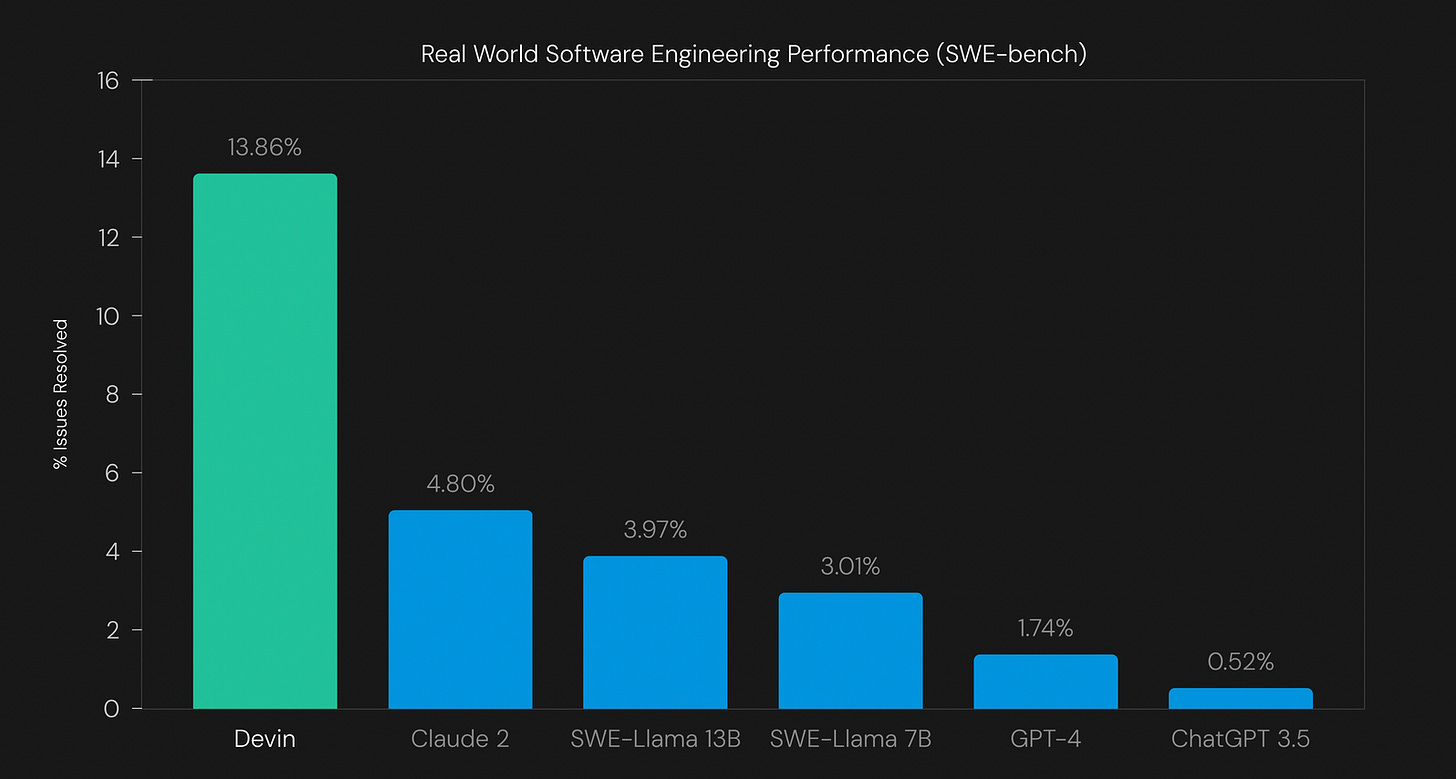
How profitable is Devin? well…
Cursor - by Anysphere
Anysphere, the company behind the more popular AI native code editor Cursor, has a similar story. Cursor went from $1M in ARR to $100M in ARR in 12 months. It’s known to be the fastest growing SaaS of all time because of their insane growth. (PLS NOTE REVENUE GROWTH)
Funny enough, if you double click on the numbers from Cursor you will see that they come from a customer base of roughly 360k made out of individual developers at a pricing of $20-40/month and an average contract value (ACV) of $276, so not from sticky, long-term enterprise contracts.
If you cannot open the Sacra URL above (paywall), check out this Reddit thread where someone took the info from there and shared it.
Same question. Are they profitable, though?
Copilot - by Microsoft & Github
There is one undisputed success story: GitHub Copilot. Backed by Microsoft and GitHub’s massive distribution, Copilot has acquired over 20 million all time users and 1.3 million paying subscribers.
Some stats on Copilot:
By early 2025, the tool had over 15 million users (now approx 20M), including free, paid, and student accounts, a 4× increase in just one year.
Over 50,000 organizations, from startups to Fortune 500 enterprises, have incorporated Copilot into their development workflows.
Among developers who try it, more than 50% continue using it long-term, proving strong stickiness.
When given access, 81.4% of developers install the IDE extension the same day, showing eagerness to try it.
96% of these users start accepting Copilot suggestions the same day, indicating minimal onboarding friction.
The tool is especially popular for work in familiar programming languages. About 70% of users rely on it for tasks within environments they already know.
In usability feedback, 43% found it extremely easy to use, and 51% rated it extremely useful, underscoring a smooth learning curve and real value.
Reference for data: https://www.wearetenet.com/blog/github-copilot-usage-data-statistics
By no chance I am here shilling for Copilot, but unlike the others, Copilot is backed by both Github and Microsoft which sets it up for success, access to market and feedback loops, training data etc, more than any other tool out there in this space.
Others
The capital is flowing everywhere. However, if you think about the success of Copilot vs others market players like Magic, Lovable, etc, while they still got high valuations, Copilot demonstrates what real, scaled adoption looks like. It’s a product. The rest are, for now, mostly just fundraising rounds with interest going lower and lower every day.
The productivity paradox: more work, not less
The central promise of these billion dollar tools is simple: make developers more productive. The investment thesis for the entire category rests on this assumption. HOWEVER, data from industry reports (respectable ones that is) is not consistent with the hype.
In fact, a landmark report from MIT’s NANDA initiative found that 95% of AI pilot projects within enterprises failed to deliver a demonstrable increase in profits or productivity. The potential is there, but the real world implementation is falling disastrously short of the hype. Especially in the hands of people that have no idea what they are doing.
But, let’s go more specifically to the coding space, a 2025 study by the research firm METR found (among other things) that when experienced developers used AI coding tools they actually took 19% longer to complete tasks.
The reason main reason is that these tools would produce shitty and hard to find errors into the codebase, requiring developers to spend time prompting AI, waiting on responses, and reviewing outputs. And sometimes never being able to fix them and having to go back and “write code like a normal human fucking being” - quote from Silicon Valley again :))
The time spent debugging from vibes vs time saved and productivity is one of those math ain’t mathing things.
The METR report was quite unsettling for myself, and I’m just a couch observer on the topic, but it really hit hard for software engineers like
. (Really recommend his article to get a POV from someone doing this for 25+ years. He also has very interesting data in it)Declining interest and developer disillusionment?
Honestly, despite all the insanely high valuations, if you actually look at what people are doing and what actual pros are saying, there’s a serious gap between what investors are hyped about and what’s really happening.
Looking at the Cursor example, Google Trends shows public interest peaked in July 2025 and then just steadily dropped. Their massive $900 million funding round in May 2025? That was right when the interest was starting to tank. Is this late stage bubble?
Also as Sayf asked me on Linkedin, why was Copilot peaking? Couldn’t find the source on the internet yet lol. Let me know if you do :D
And it’s not just search trends. Developers and tech folks are getting seriously fed up.
On HackerNews and all the industry blogs, the initial optimism has totally evaporated, replaced by this pragmatic skepticism.
People are calling out a “productivity cliff” with tools like Devin, they look amazing in demos, but then you try to do something complex in the real world and they just fall apart.
There are so many known examples of companies trying to build apps or SaaS using these tools and end up with their data spilled all over the internet, having no control over their information and no idea how to solve the bugs because they do not understand them to begin with.
Case in point some now classic examples:
And the most dangerous narratives do not come from tools that market to developers and promise productivity, but come from tools that market to everyone, and guess what? Not everyone should have the possibility of building software and being in charge of user data if they have no idea wtf they are doing in the first place. Why take such insane responsibilities if you have not written a line of code in your life? If you have no understanding of how software engineering works?
Vibe coding promotes a superficial understanding of software engineering, leading to code that’s unmaintainable and insecure AF.
Sure, one can say that the consensus is that these tools are great for boilerplate and simple functions, basically acting as “super powered autocomplete.” But when it comes to the ESSENTIAL stuff: system design, complex logic, and actual contextual awareness, they consistently fail.
FOMO will be FOMO-ing
Are AI coding tools are inherently useless? No. GitHub Copilot has unequivocally proven their value. The problem is a systemic sickness in Silicon Valley’s funding ecosystem, where the demo has become more important than the customer.
The culture incentivizes optimizing for benchmarks over solving real-world problems. A high score on a synthetic test like SWE-Bench can unlock a billion dollar valuation like in the case of Devin, creating a perverse incentive and precedent to build a great demo at the expense of a great product.
OpenAI’s astronomical valuation, last reported at $500 billion, has created a gravitational distortion field. Nobody is really talking that much about how all these companies are crashing and burning through CPUs compute costs,NVIDIA tax.. and while in the news you see huge valuations and numbers, cashflow is bleeding across the space.
Again, I am asking for the third or 4th time now, how profitable are they?
Last time I checked, not that much. Because how can you eat the cake and be skinny too?
To grow you need the market, but the more market you gain, the higher your compute costs will be. Scale is painfully expensive.
And then, VCs, using OpenAI as a benchmark, are forced to accept wildly inflated multiples for any company in its orbit. They are not investing in a business but buying a lottery ticket for a 1 in 100 chance of finding the next generational company.
The result is a capital allocation strategy that looks less like disciplined investing and more like spraying a firehose of cash at a perceived trend.
And… the grift indicator is flashing red. DING DING DING. In fact, for Devin’s example, Cognition AI’s founders were in the crypto space before pivoting to AI. This pattern of pivoting to chase the latest, hottest trend is a hallmark of a market driven by hype, not a desire to solve foundational problems.
PS: Not really hating on Devin, they are just the most outrageously funded and I have a lot of questions of where that money is going and what are the fruits of that labor?
So, what is the inevitable correction?
Will the regression to the mean do its own thing? Most likely yes.
The confluence of declining user interest, growing developer disillusionment, and hyper-inflated valuations points to an inevitable market correction. When it comes, the landscape will likely separate into three distinct camps:
1. Winners. A small handful of companies, almost certainly including GitHub Copilot and perhaps a well capitalized player like Cursor, will survive and thrive. They will have achieved the scale, enterprise adoption, and technological moat necessary to build a sustainable business.
2. Zombies. This will be the fate of the vast majority of the 40+ funded companies. They won’t die immediately, their venture funding will keep the lights on for a year or two, but they will have no path to profitability or to ever justifying their lofty valuations. They will shamble forward, a testament to the misallocated capital of the boom times.
3. Grifters, who will have already moved on. The founders who pivoted from crypto to AI will pivot again to whatever the next hype cycle is, leaving a trail of failed companies and burned out investors in their wake. And so will the companies that rode the vibe wave purely for eyeballs.
For founders, the lesson is a timeless one: building a company for a flashy demo is not the same as building one for a paying customer. For investors, it’s a harsh reminder that valuation discipline, while unfashionable during booms, is the ultimate arbiter of returns. And for the enterprises caught in the middle, it is a warning to separate the signal of genuine utility from the noise of the demo-driven hype machine.
The commoditization threat looms over all but the biggest players. As powerful open-source models continue to improve, the thin technological edge enjoyed by many of these startups will evaporate. They can go away in a 20-minute keynote at a conference because OpenAI or Google natively built something to replace their wrapper.
This brings us to my final question: As the data shows public interest declining while venture dollars continue to pour in at ever-higher valuations, one has to ask: if the users have already moved on, who, exactly, is buying at the top?
Until next time,
X
Juliana




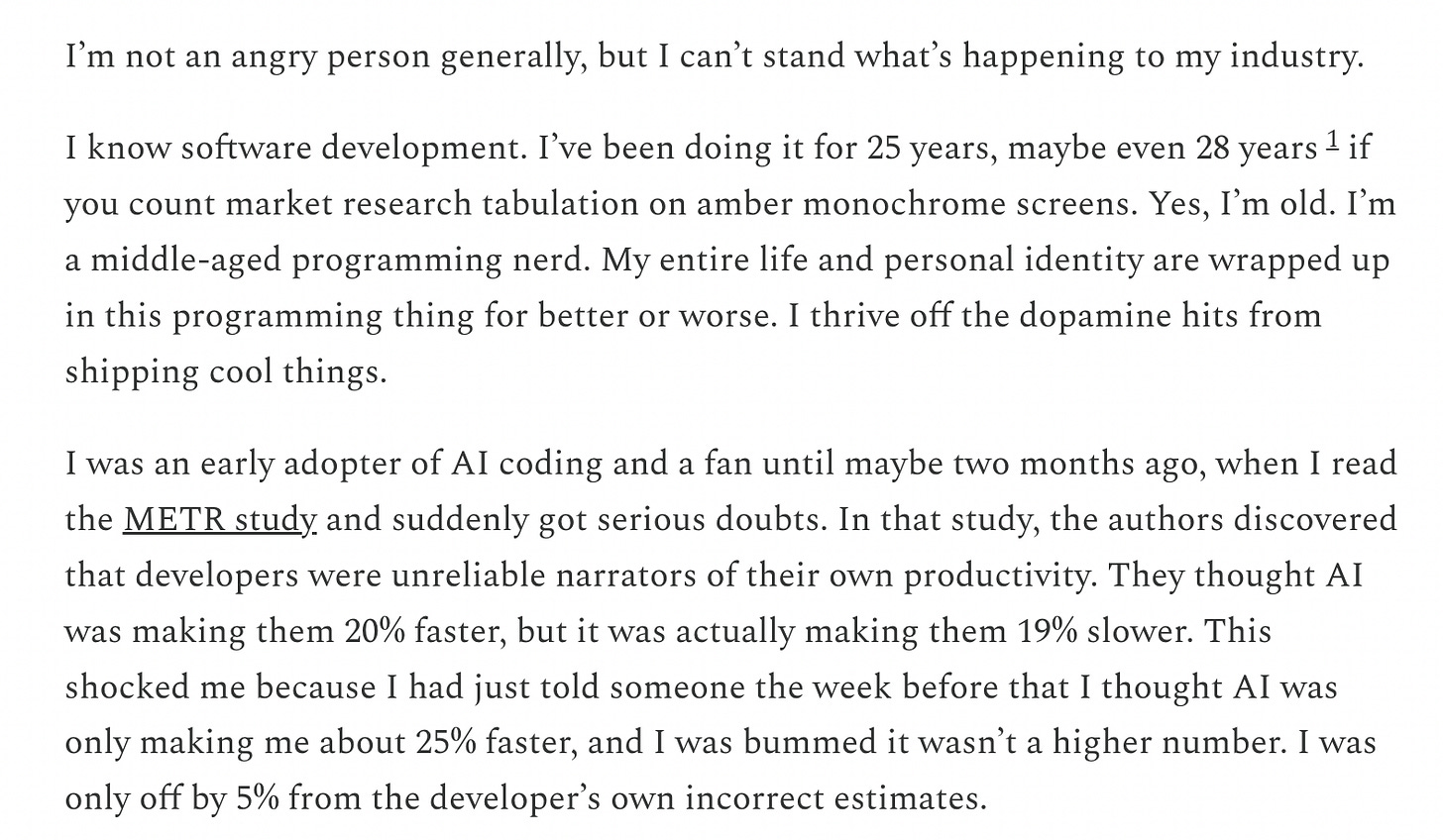

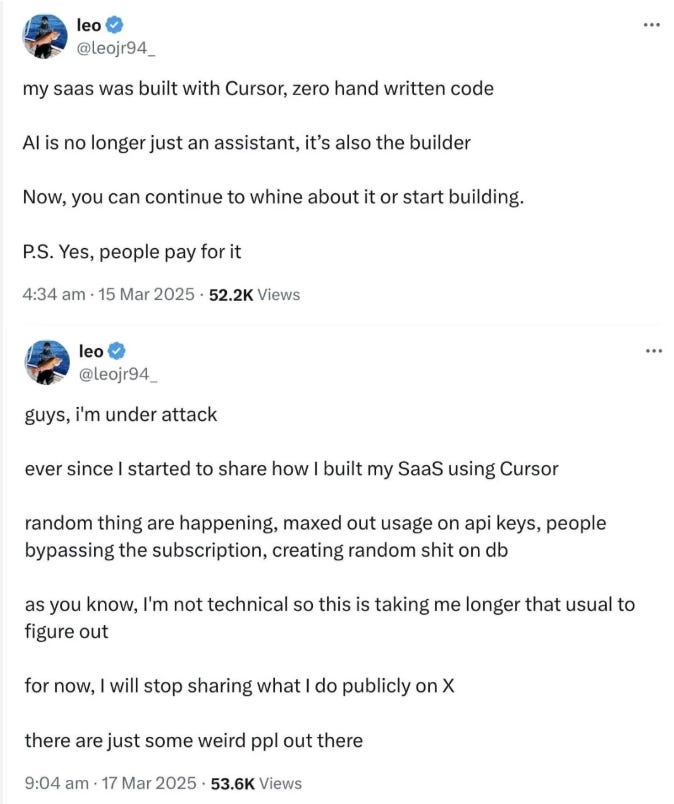
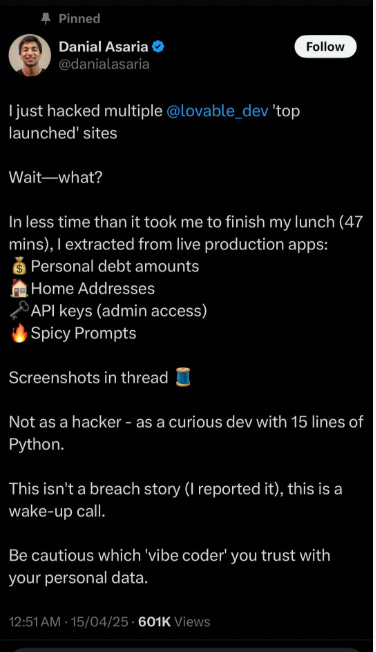

Last paragraph is the most terrifying of all!